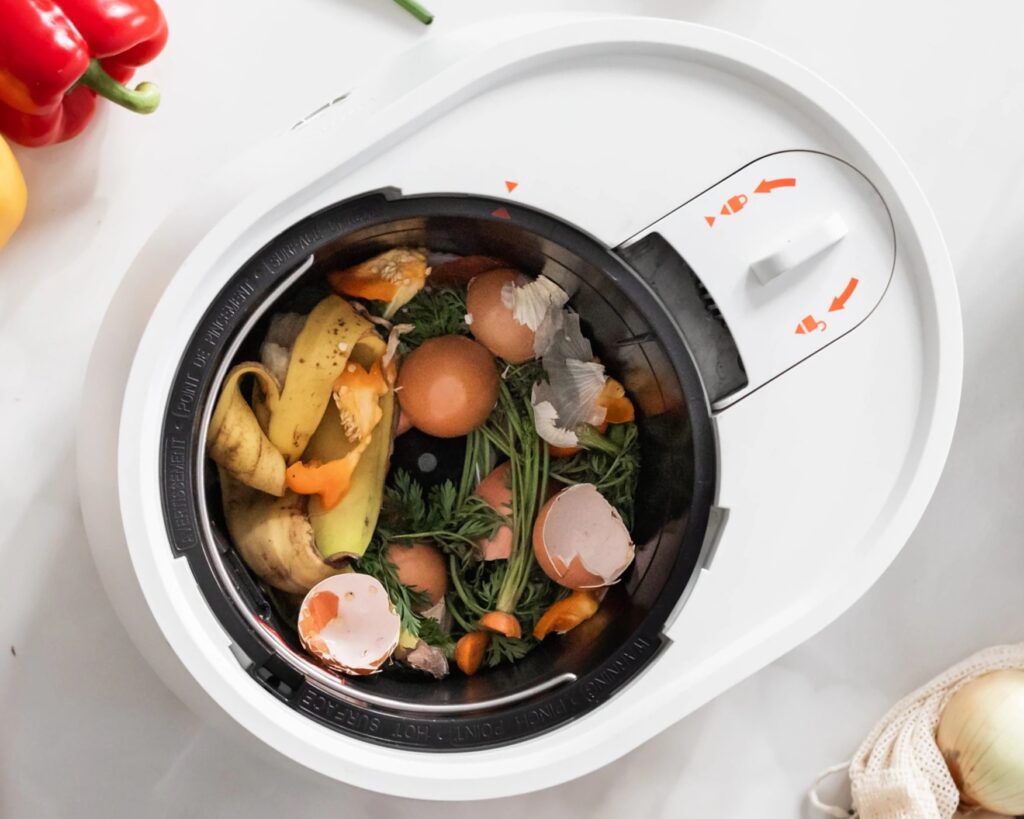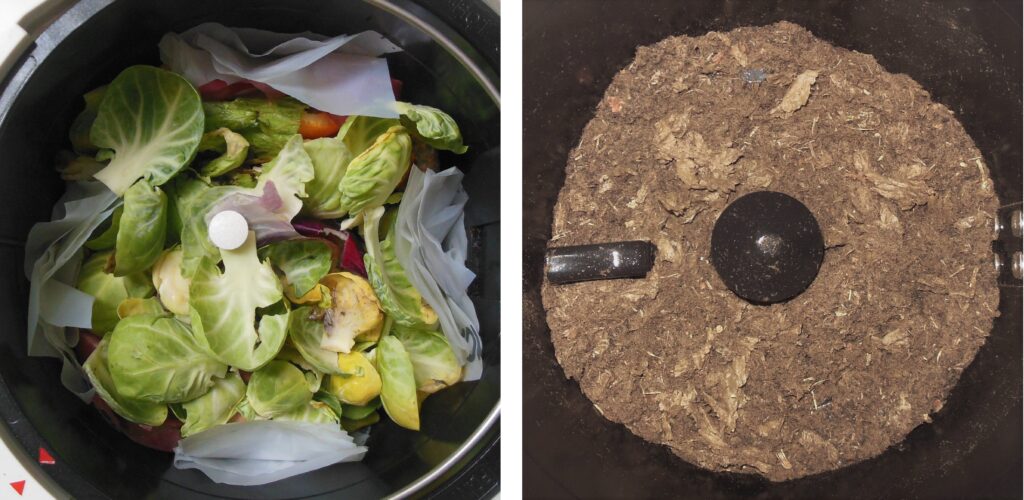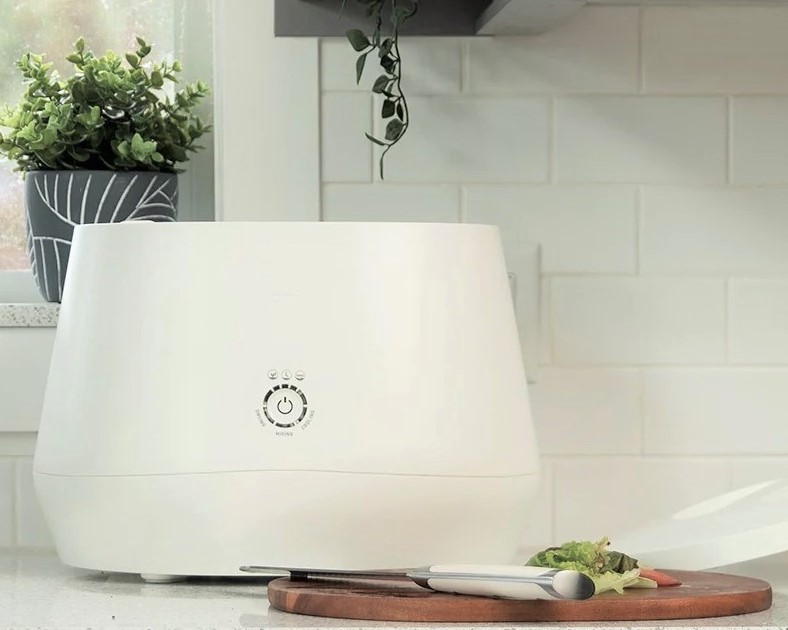Lomi Home Composter
Editors’ Choice Home
May 2023
Lomi Home Composter
Review by Angie Kibiloski
The Lomi, from Pela, is a countertop kitchen composter, which uses heat, aeration, and abrasion to reduce your kitchen waste by 80% in volume, turning it into a usable soil additive, and helping limit the amount of food waste you send to the landfill. Launched back on Earth Day in 2021, it’s already made its way into over 140,000 happy homes. There are many reasons why you might want to welcome one into your home too, and start composting your kitchen scraps. If you have a garden, you can use the resulting compost to fuel healthy plant growth. If you’re concerned about the environmental impact of decomposing food in the landfills, composting eliminates the need to send it there. Maybe your city has implemented new regulations requiring that food waste only be disposed of in green bins, and doing that daily is either impossible or inconvenient for you. Composting is a great mid-step between collecting your scraps in the kitchen, and eventually emptying them into the green bin. Whatever your reason, there are several options on the market to fill that need, and Lomi is one of the top contenders for your attention.
I recently used another brand’s composter and was sorely disappointed, so I started my Lomi review process with moderated expectations. I needn’t have done so. To start out with, Lomi was very easy to set up. No complicated parts, no connecting to an app, and no priming of a finicky microorganism for 24 hours like in my previous experience. All I had to do was pour the activated carbon pellets into the filter areas and it was ready to go. It took me a full week to fill the bucket to its max-fill line, due to being a single user who doesn’t throw away a ton of food. Even after a week, there was no odor coming from inside my tightly sealed Lomi when I opened the lid, and blessedly no fruit flies. Definitely not something that could be said of those little plastic kitchen buckets you can use to collect your green bin waste. Once filled, all I had to do to start Lomi was hold down the middle button to select one of 3 modes, and press it again to begin the cycle. Then, just wait while the little machine whirs away for a few hours, heating and stirring everything I’d loaded into it.
After my 1st Lomi cycle finished and I opened the lid to peek inside, I was pleasantly surprised that it had exceeded all of my expectations, and my food waste was, in fact, reduced to practically nothing. I wish I’d been filming my reaction, because I’m sure there was shock clearly written on my face. I was very impressed. I hadn’t even been very careful about the type and size of what I threw in the bucket, wanting to test it out with what would honestly be most people’s lazy kitchen habits. I had multiple full coffee filters with grounds, several teabags, a couple whole banana peels, some apple cores, orange rinds, celery pieces, and even some stalks I’d pruned from a house plant. What I ended up with was a small amount of fluffy soil, scattered with tiny pieces of what looked like mulch, soft to the touch without being grainy, dry without being dusty, and smelling vaguely like an oat bran muffin. Pela says the texture, color, and scent will vary depending on the mode and what sort of foods you add, though all my cycles so far seem to have produced similar results.
That 1st cycle was an Eco-Express Mode cycle, the shortest and least energy-consuming of the cycles. It only runs for 3-5 hours, and consumes 0.6 kWh, which is less energy than running an electric oven for 15 minutes. I spent another week filling my bucket again, with similar ingredients plus egg shells and avocado skins, and also added pieces of the bioplastic bag that came wrapped around the Lomi, tucked nicely around the sides of the bucket as recommended. I ran a Lomi Approved Mode cycle, which is the mode that can compost all of the Lomi approved biomaterials, a list of which you can find on their website. I also added one of the 45 included Lomi Pod tablets this time, which is their version of a microorganism, to help break down the material more effectively. Placing a small Lomi Pod on top of the scraps with a tablespoon of water to activate it was a whole lot easier than my ordeal with the other brand’s microorganism, which felt more like having a needy pet than a kitchen helper. The Lomi Approved mode uses a bit more energy, at 0.75 kWh, and takes 5-8 hours. I ended up with soil very similar to the Eco-Express Mode result, except this time it had little shrunken leaves of the bioplastic mixed in. It didn’t compost that down as well as the food waste, but it broke it down to considerably smaller than it was when it went in. There’s a 3rd mode, the Grow Mode, which runs at a lower temperature to preserve the nutrients in the source material, making the best compost to add to your garden, but it also takes 16-20 hours and uses 1Kwh of energy. I’ve yet to test this mode.
Being an apartment dweller with no garden space, I don’t need super nutrient-rich compost, so unless I have some bioplastics to dispose of, I’ll mostly use the Eco-Express Mode myself. The main reason I’ve been in the market for a kitchen composter is that my state is making it illegal to throw away kitchen scraps. In an urban area, I’m already dealing with pests, so the thought of keeping an open bucket of rotting food in my kitchen until I can find a green bin to chuck it in (my building doesn’t have one yet) is very unappealing. Now I can just have a container for accumulating my Lomi dirt, and periodically take that to pour into a convenient neighborhood bin. For this purpose, the Eco-Express Mode works perfectly. Another thing my apartment lacks is plentiful counterspace, so my Lomi is currently living inconspicuously beneath my kitchen table, but at just 16″ W x 13″ D x 12” H, and only 20lbs, I could move some things around and house it on my countertop easily enough.
I do have a couple of minor gripes, with the lid and the noise level, but these can be mostly overlooked compared to all of the pros about Lomi. I feel like the lid design is a bit clunky, and unless you’re looking at where the locking icons line up, it can be fiddly to get back in place. I’ve been assured, however, that this known complaint is being finessed in the next version. The noise level isn’t what I’d call quiet, but it’s not exactly loud either. It’s louder than I’d like if I was running the longer Grow Mode, but I can ignore it for the most part during the short Eco-Express Mode. Pela says it’s 60 dB, which I can only assume is true. To me, it’s louder than a fan but quieter than a window AC unit, and sounds oddly similar to an old Xerox machine in its mechanical rhythm pattern. That other composter brand I tried was considerably quieter, but as it was constantly on, it was like living with a white noise machine. At least Lomi only makes noise for a few hours and then shuts off.
I’m 3 cycles in, and still thoroughly pleased with my Lomi. I’m impressed with how it handled a variety of foods, even when I didn’t bother cutting them into smaller pieces or didn’t clean out the previous cycle’s soil before adding new material. Some kitchen composters, like the one I previously tried, seem to be more hassle than they’re worth, and require constant vigilance on what you add it, or how you maintain the internal environment. Lomi is great for people like me, who don’t have a lot of time to spend in the kitchen, and tend to have lazy habits when there. Lomi is quite pricey, starting at $499 for the basic model, so it’s not going to be a great solution for everyone, but if you can afford it, I’d highly recommend trying it. If you have the space and ability to compost outside naturally, of course that will be the better and more affordable way, but when you need an in-home solution, Lomi is the most well-known brand for a reason. Before you commit, I encourage you to read all about Lomi, how Pela makes it climate neutral and why that’s important, and their future sustainability mission. If you really want to dive deep, the FAQ section is full of very useful information.










